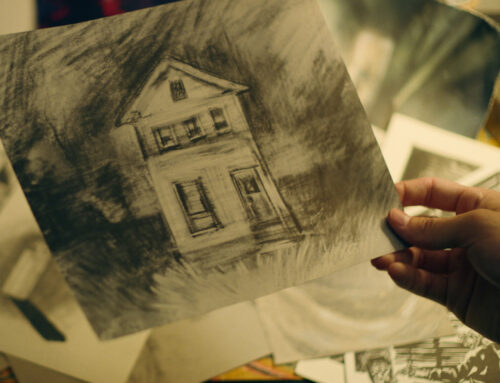 Bertrand Bonello (Saint Laurent) returns with Zombi Child, a socio-political treatise disguised as a horror film. (In fact, there’s hardly any “horror” at all.) However, the film bites of more than it can chew. By juggling too many themes—ranging from teenage angst and French Colonialism to identity politics and racism—the film feels strung together to impart some broad message that becomes lost in the telling.
Bertrand Bonello (Saint Laurent) returns with Zombi Child, a socio-political treatise disguised as a horror film. (In fact, there’s hardly any “horror” at all.) However, the film bites of more than it can chew. By juggling too many themes—ranging from teenage angst and French Colonialism to identity politics and racism—the film feels strung together to impart some broad message that becomes lost in the telling.
The film opens in Haiti in 1962. A man named Clarvius (Mackenson Bijou) dies and returns as a zombified person. The location is a plantation, full of zombified persons working the land. These opening images are startling in their directness.The first ten minutes establish that this zombie narrative is firmly rooted in the practice of Haitian voodoo. This religious aspect is often eschewed from most films of the genre; its authenticity is most welcome here.
However, when the film switches to modern-day, it loses its momentum. We next see a classroom at an all-girls school listen to their instructor drone for minutes on end about Napoleon. Other classroom segments bring the story to a standstill in order to insert overwrought socio-political commentary. In addition, two locker room scenes—that appear to homage the famous sequence in Brian De Palma’s Carrie—feel entirely unnecessary.
Zombi Child intertwines two narratives—one of Clairvius running away from the plantation and the other about Fanny (Louise Labèque), a teenager at an elite French female academy, who invites a young Haitian student named Melissa (Wislanda Louimat) into her friends’ faux sorority. After passing the test to join, by reciting RenèDepestre’s “Captain Zombi,” Melissa tries to fit in. Meanwhile, Fanny attempts to appropriate elements of Melissa’s voodoo culture to rid her of the memory of a failed relationship.
The film liberally uses flashbacks and flashforwards to show how these two stories connect, but the haphazard editing only manages to create a muddled storyline. Any tension the film may have had dissipates at the end when Melissa tells how Clarvius’ story ties into the present. When lengthy exposition is used to explain a plot twist, as is done in Zombi Child, it feels like a cop-out to make up for poor visual storytelling.
Reportedly, Bonello researched Haitian voodoo history and alleged cases of zombification to inform his film. Given how convoluted his script is, the film may have been more compelling if it had solely focused on Clarivius’s narrative arc. His story is infinitely more interesting than the present-day one involving Fanny and Melissa. Bonello’s attempt to thematically link the past and present between France and Haiti ultimately fails as a compelling storytelling device.
The film’s measured pacing may also be off-putting to viewers expecting every moment to be filled to the brim with guts and brain-eating carnage. Bonello’s deliberate pacing in order to expound on the film’s overarching themes also brings up a larger issue. It seems to perpetuate a fallacy that introspective, slow burn narratives (more often than not) equate to quality filmmaking. While Zombi Child certainly possesses many merits—particularly its cinematography, costume design, and strong acting—the whole does not equal the sum of its parts.
Rating: 6 out of 10 stars
| Zombi Child | ||
| RATING: | UR | Zombi Child (2019) | Trailer | Louise Labeque | Wislanda Louimat | Katiana Milfort |
| Runtime: | 1 hr 42Mins. | |
| Directed By: |
Bertrand Bonello
|
|
| Written By: |
Bertrand Bonello
|
|







